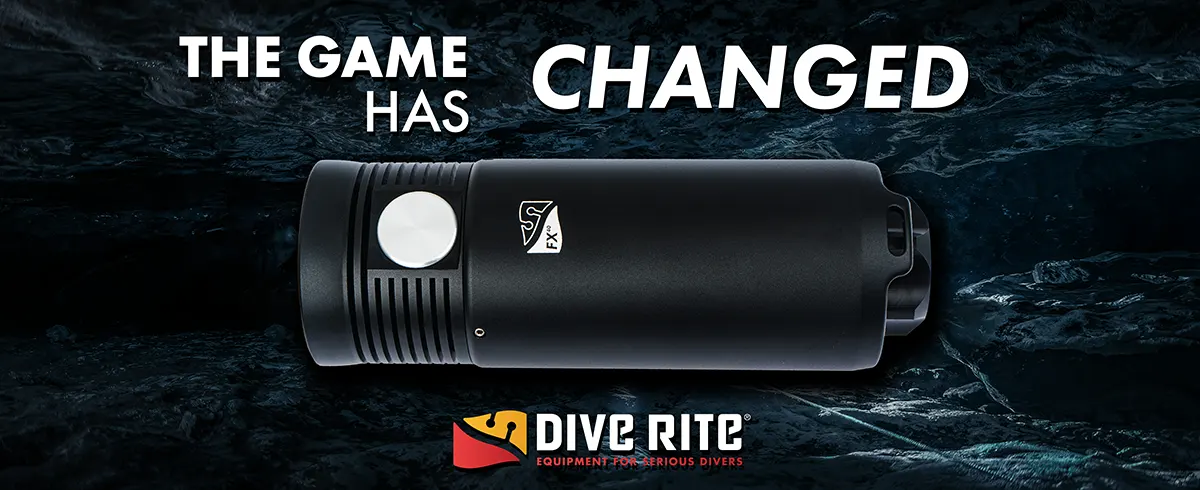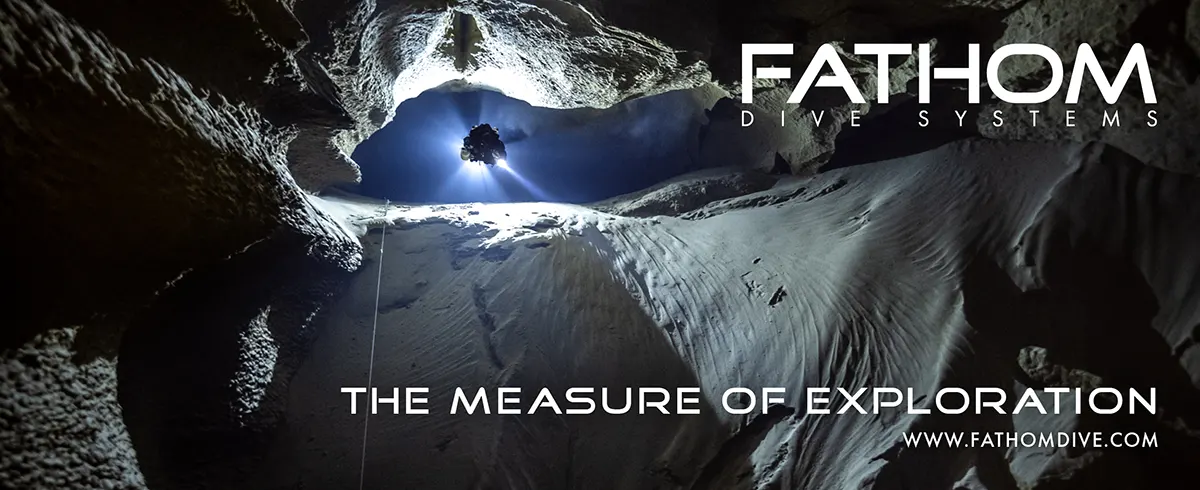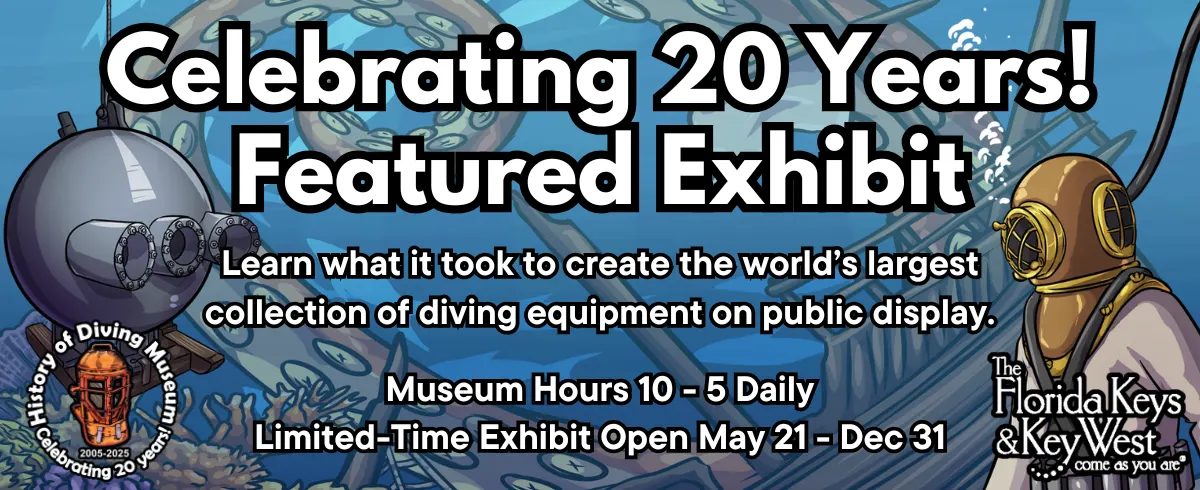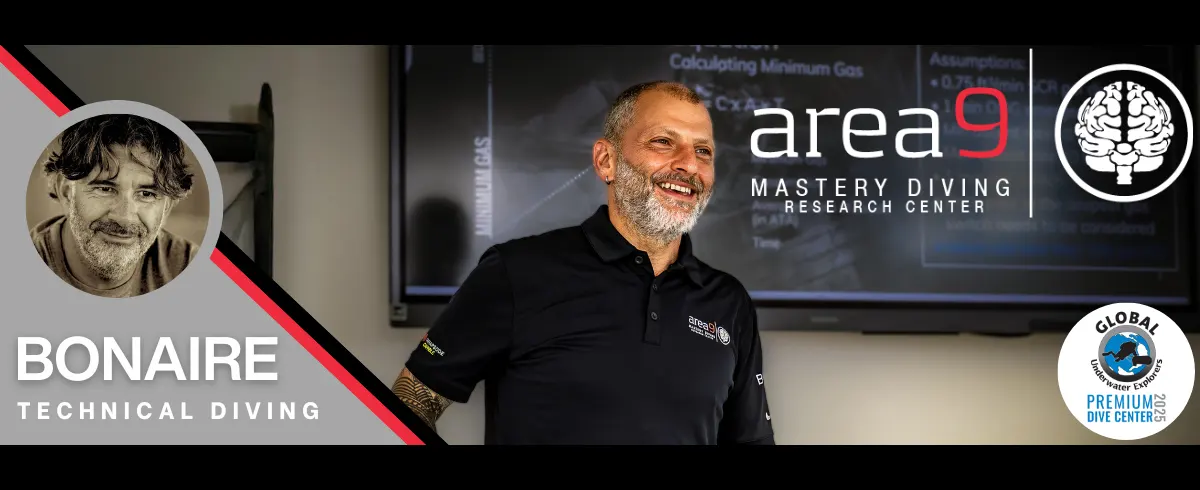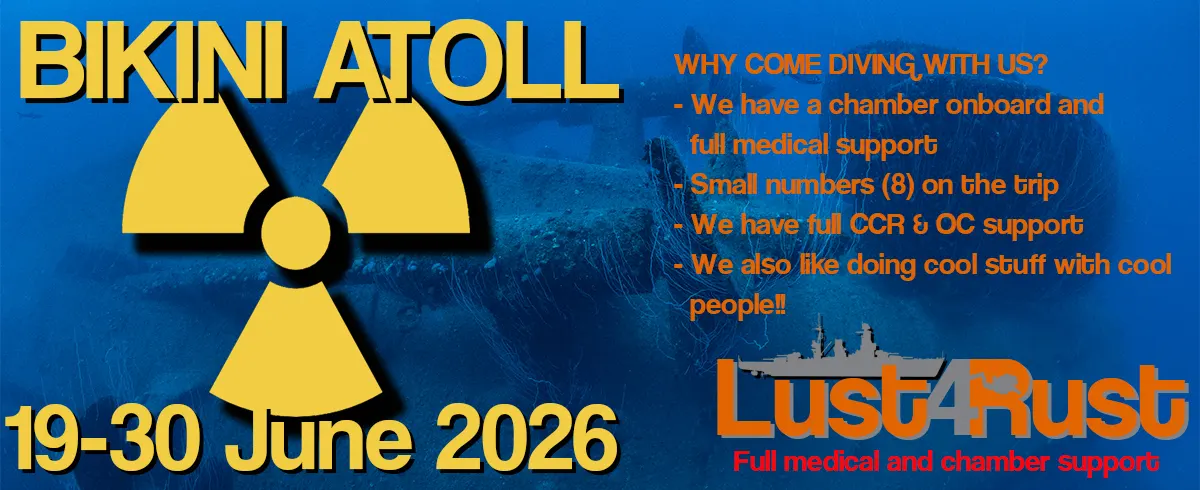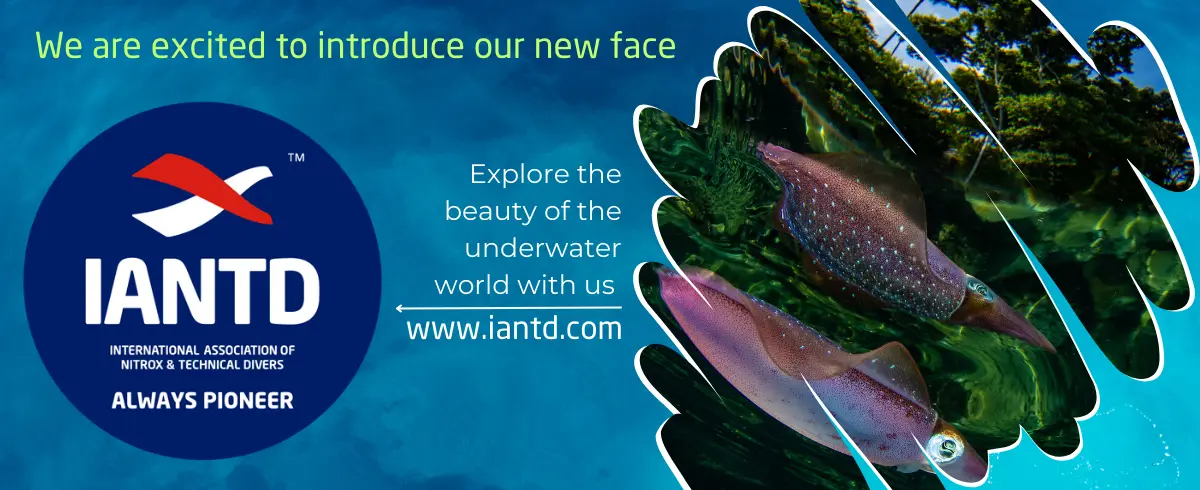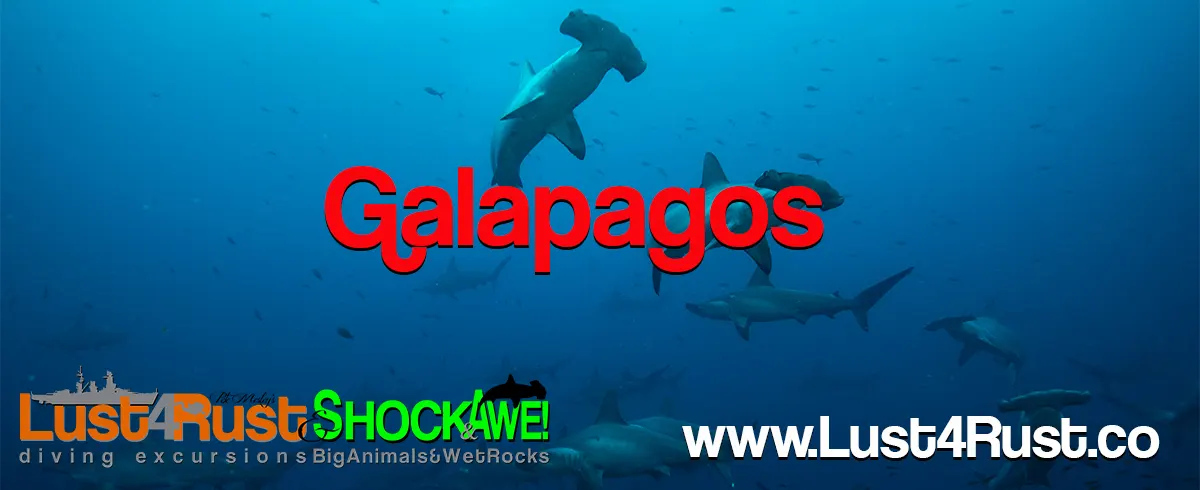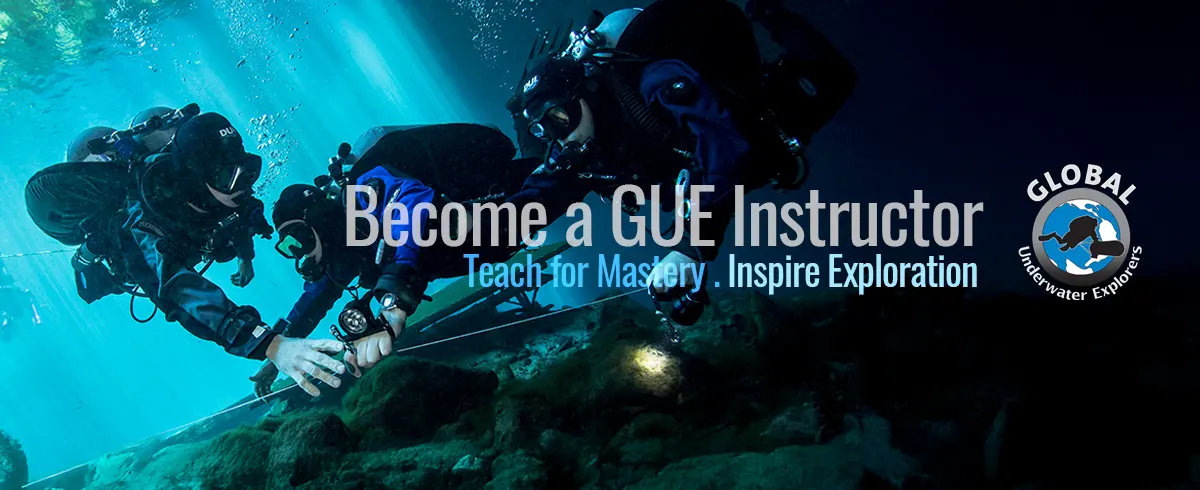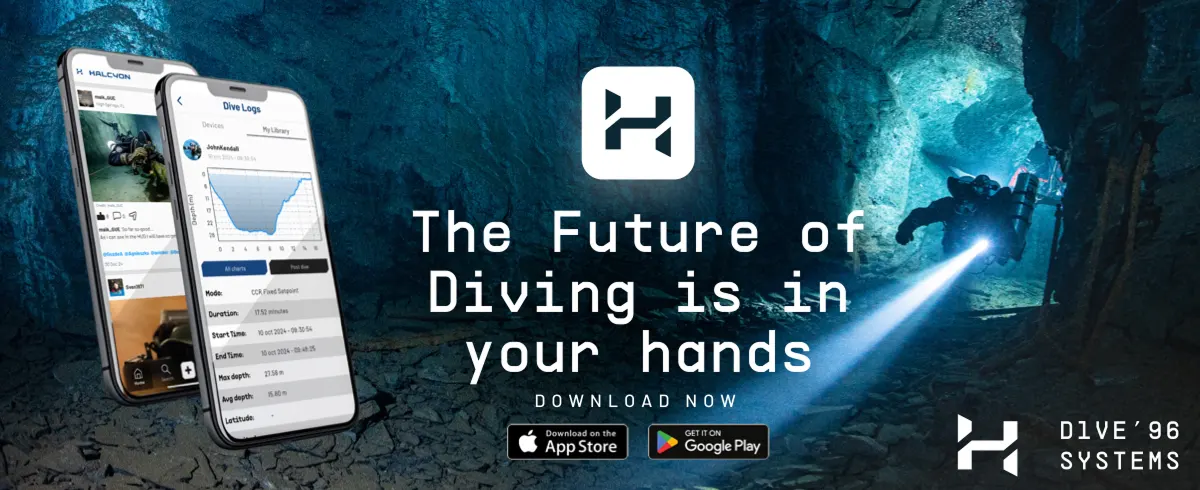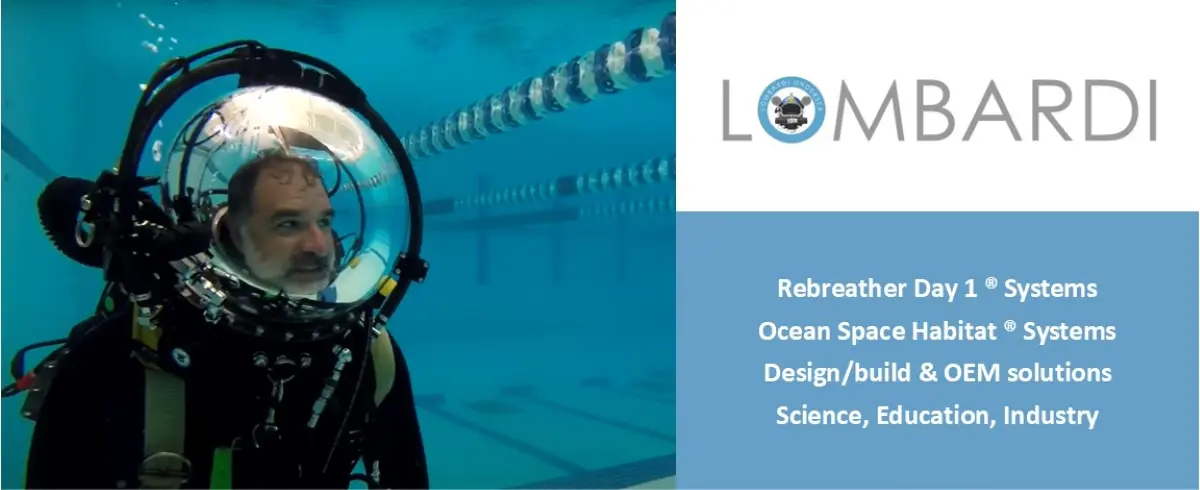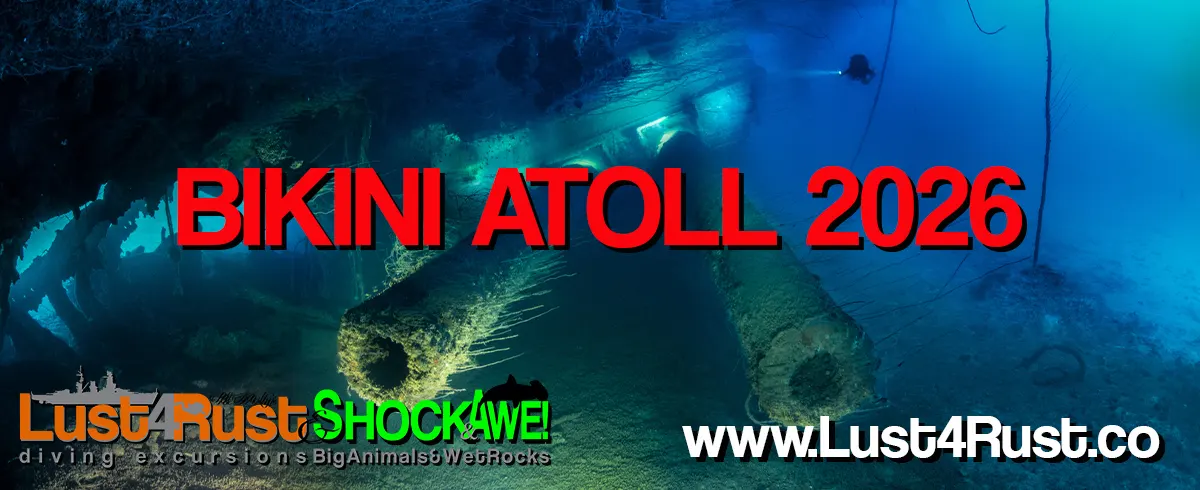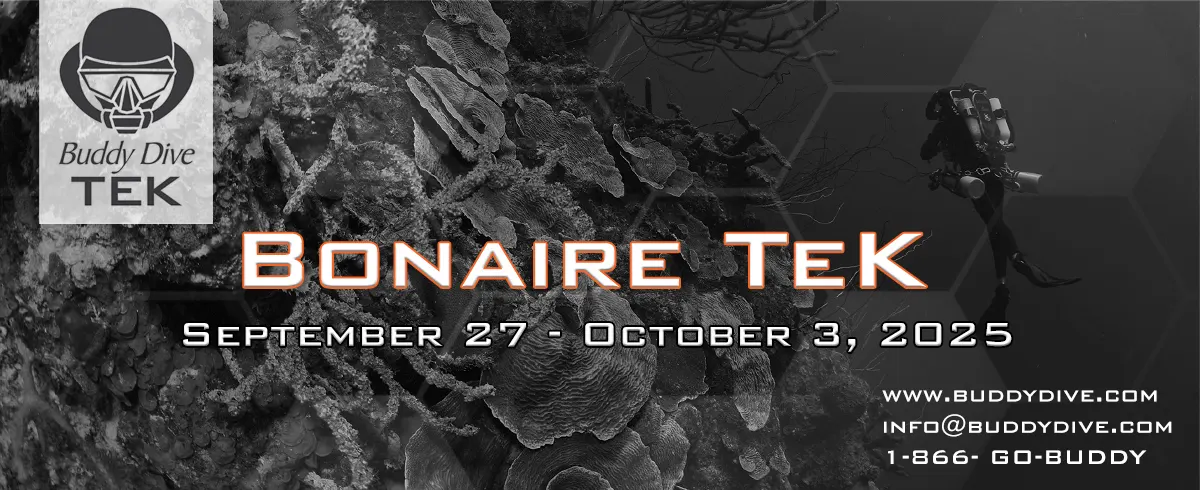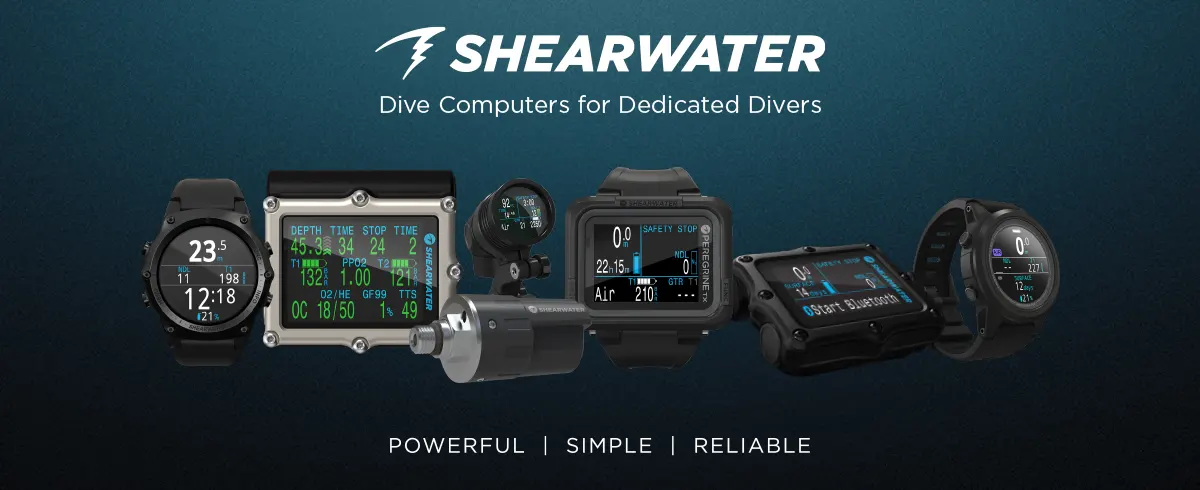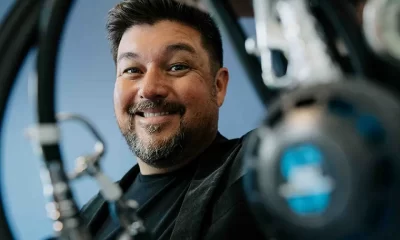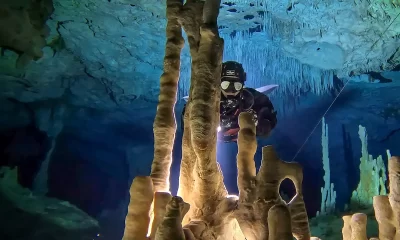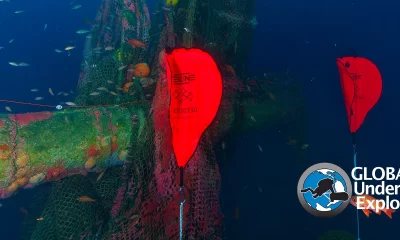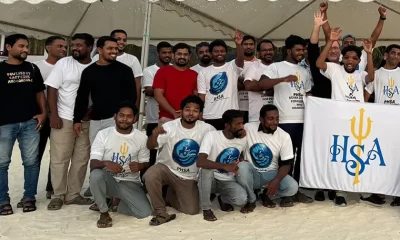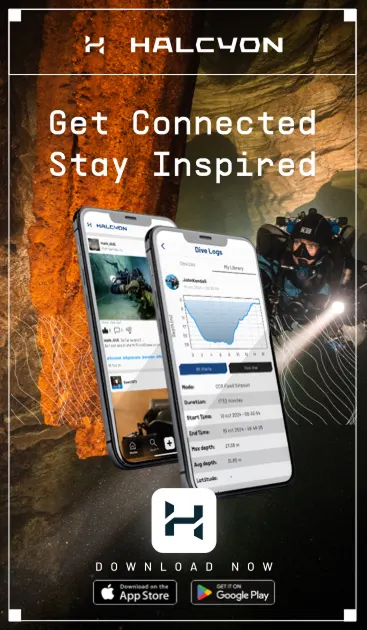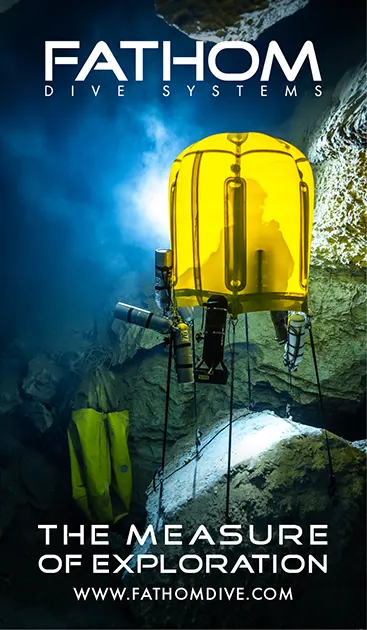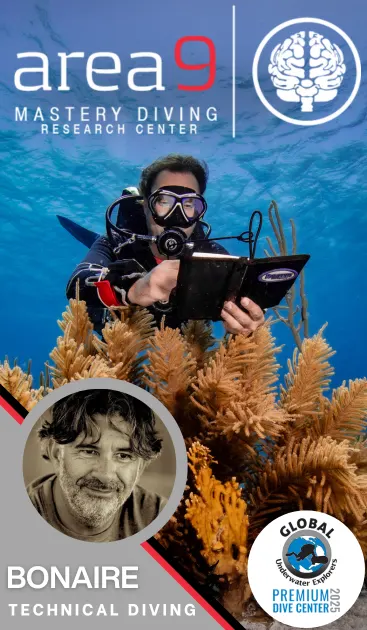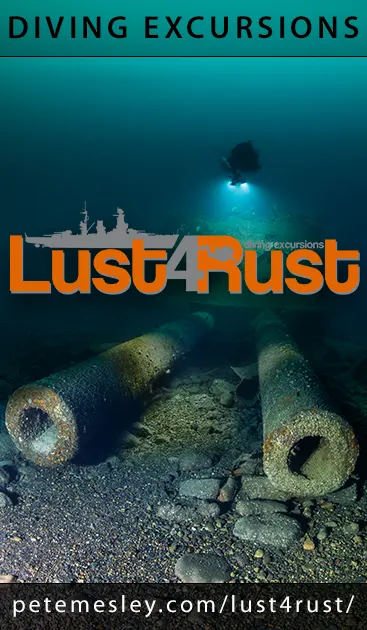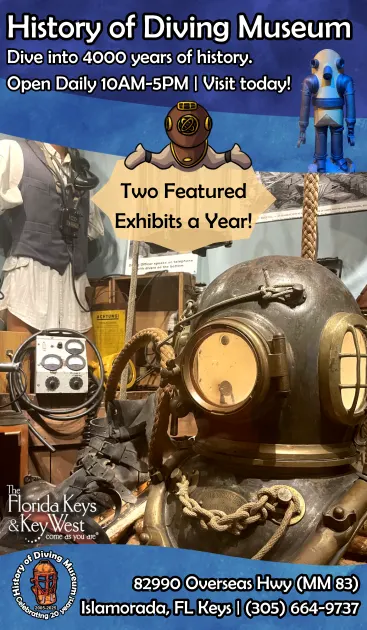Community
Diving with a Purpose: Finding Slave Ships and Much More
Ken Stewart has found purpose in going underwater. In addition to training over 500 young black and brown divers, his organization, Diving With A Purpose (DWP), which has been widely featured in the media, has helped locate and document the wrecks of 18 slave ships in six countries. Scuba storyteller Gil Zeimer explains how DWP volunteers and its partners, including finding the infamous Clotilda—the last ship involved in the Transatlantic Era of African Enslavement (TEAE)— has also created practical programs to train future maritime archeologists and conservationists.
by Gil Zeimer. Photos courtesy of Diving With a Purpose.

Seventy-nine-year old Ken Stewart has arguably done more for Black scuba divers than anyone on the planet. His organization, Diving With A Purpose (DWP), which he founded in 2005, is actively engaged in multiple programs that has trained more than 500 young Black divers, forged a collective approach to restoring our ecosystems, and trained paraplegic divers.
What’s more, DWP’s flagship marine archaeology program, which employs veteran volunteer divers to locate and document shipwrecks—especially those related to the Atlantic slave trade—has generated worldwide press having discovered and documented 18 shipwrecks in six countries, an effort that required over 18,000 volunteer hours.
Born in New York City, Stewart moved to Nashville, Tennessee in 1979 where he worked as a customer service rep for the likes of IBM, Eastman Kodak and Danka Office Imaging for nearly 30 years, before devoting himself to diving and DWP. He earned his Open Water certification at age 44, and has subsequently logged over 1,000 dives.
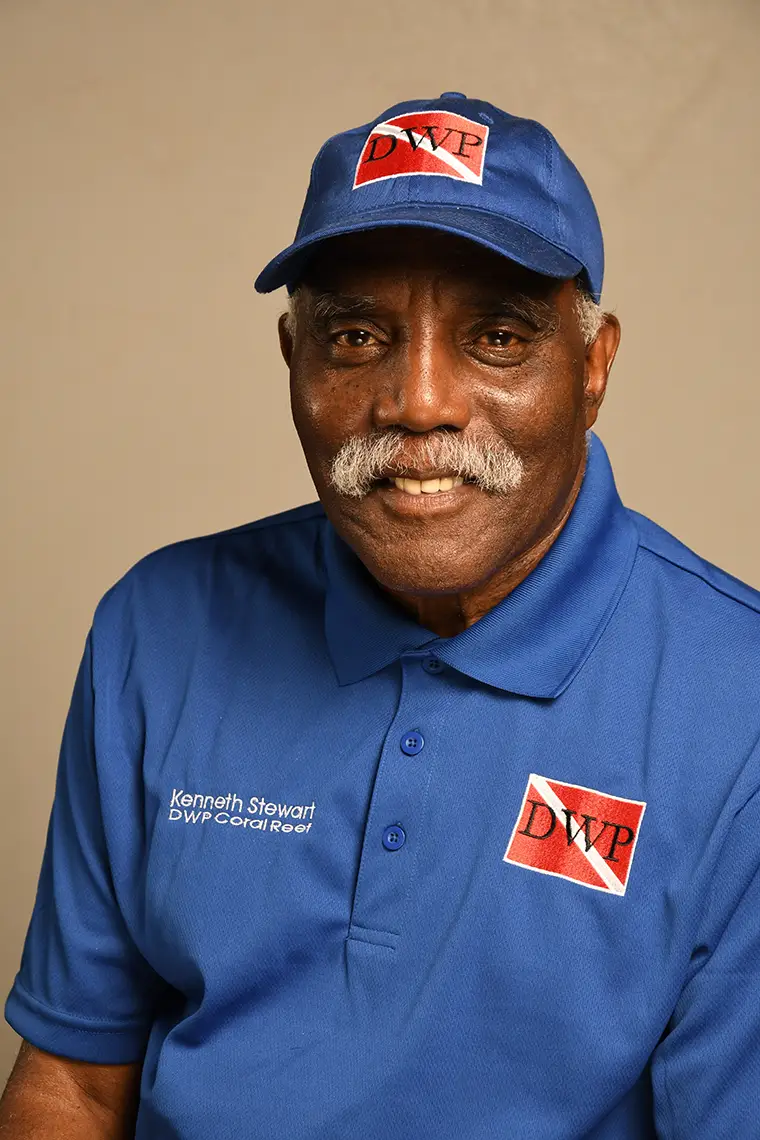
A Phone Call Was Just The Beginning
In 2003, Stewart was the Southern Region Representative for the National Black Scuba Divers (NABS) when he received a phone call from award-winning freelance journalist and photographer, Karuna Eberl. She was producing a documentary called The Guerrero Project and wanted to interview some Black divers.
“I enlisted some of my NABS friends—Erik Denson, Goldie Singleton, Major Nimiock, and Rod Singleton to be interviewed for Eberl’s documentary,” explained Stewart. “Her film was about the search for the slave ship the Guerrero, as told through a book by historian Gail Swanson. The feature-length documentary also tells the story of treasure hunters and archaeologists and their opposing views about salvaging and archaeology.”
Aboard the Guerrero, a pirate Spanish slave ship, were 561 captive slaves from the African continent and five nations. For three years, the ship cunningly evaded a pursuing British warship, but it sank in 1827 off the Florida coast. This documentary fuses history with high-seas adventure, modern-day expeditions, heated archaeological debate, and intense emotions concerning today’s race relations.
Brenda’s Passion Led to a Lightbulb Moment
According to Stewart, “A year into the project, I was working with the Tennessee Aquatic Project and Development Group (TAP), when I had the pleasure of meeting Brenda Lanzendorf, an archaeologist at Florida’s Biscayne State Park and the ‘star’ of the documentary.”
“Her passion for The Guerrero Project search and unwavering support for preserving our national marine sanctuaries was inspiring,” he said. “During our meeting, she told me that Biscayne Park had a lot of wrecks needing to be documented. And since Brenda was the only park archaeologist, she needed help! I went home and contacted many of my NABS brothers and sisters. I began the correspondence with, ‘Tired of the same old dives? Let’s dive with a purpose!’ That was my lightbulb—or A-ha’—moment.”
“I went home and contacted many of my NABS brothers and sisters. I began the correspondence with, ‘Tired of the same old dives? Let’s dive with a purpose!’ That was my lightbulb—or A-ha’—moment.”
“Erik Denson, Erly Thornton, and Rod Singleton were the first DWPers. Soon, these three experienced NABS divers and I were taking an underwater archaeology course, and DWP was born! The rest is history, but it took another nine months to put the mission together in 2005. We attended the documentary’s premier in Nashville and I did all the public relations work in advance to make sure it got noticed. It was very warmly received by the Nashville community.”
Lots of Divers and Instructors
Today, Diving With A Purpose is proud that more than 500 divers have completed the course and more than 60 have become instructors, including five instructors from TAP, the local youth organization that Stewart co-founded. These are notable achievements considering that less than 10% of all US scuba divers are Black or African American.
Simultaneously, DWP has become an integral part of Biscayne Park’s yearly activities and has expanded its reach each year since. Sadly, the driving force of the program is no longer with us. Brenda Lanzendorf passed away in 2008, but her legacy continues.
“My life has been enriched by the experiences I’ve had through the Diving with a Purpose program,” added Stewart. “In the process, hundreds of African American archaeology enthusiasts have been born!”

The DWP Mission and Vision
Diving with a Purpose (DWP) is a 501(c)(3) organization dedicated to the conservation and protection of submerged heritage resources and provides education, training, certification, and field experience to adults and youth in the maritime archaeology and ocean conservation fields.
But its overarching mission is to restore our oceans and document the submerged history of African people around the world.
“We want to empower and uplift our divers from underrepresented backgrounds in the fields of maritime archaeology and ocean conservation,” Stewart continued. “DWP’s special focus is the protection, documentation, and interpretation of the African Diaspora, including slave trade shipwrecks, their maritime history, and the culture of African Americans who formed a core of labor and expertise for America’s maritime enterprises. If you love our work, consider supporting us to be a part of the change.”
“DWP’s special focus is the protection, documentation, and interpretation of the African Diaspora, including slave trade shipwrecks, their maritime history, and the culture of African Americans who formed a core of labor and expertise for America’s maritime enterprises.“
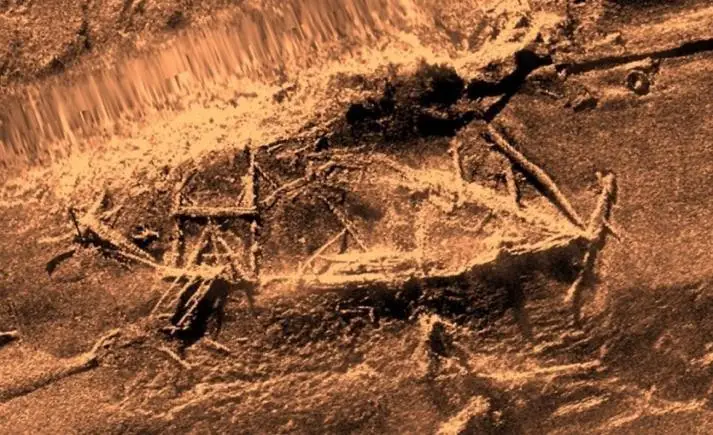
Finding Slave Ships Became an Obsession: The Clotilda
Though Stewart’s grandparents were born in the 1880s in segregated Barbados and moved to America in 1910, he said, “Nobody in my family that I know of was a slave.” But that didn’t sway his fascination with finding slave ships.
The Clotilda was the last ship involved in the Transatlantic Era of African Enslavement (TEAE) to bring captured Africans into the US illegally in July 1860. It was certainly not easy to find; it took five years to finally locate it in July 2018, nearly 160 years later, in the Mobile River east of Twelvemile Island in Alabama.
According to National Geographic, about 35,000 ships brought nearly 12.5 million captive Africans across the Atlantic Ocean to the Americas between the 15th and 19th centuries, according to the Trans-Atlantic Slave Trade Database.
According to National Geographic, about 35,000 ships brought nearly 12.5 million captive Africans across the Atlantic Ocean to the Americas between the 15th and 19th centuries, according to the Trans-Atlantic Slave Trade Database.
Furthermore, of the estimated 500 to 1,000 ships that purportedly were wrecked, only five have been found—and of those, only two have been properly documented.
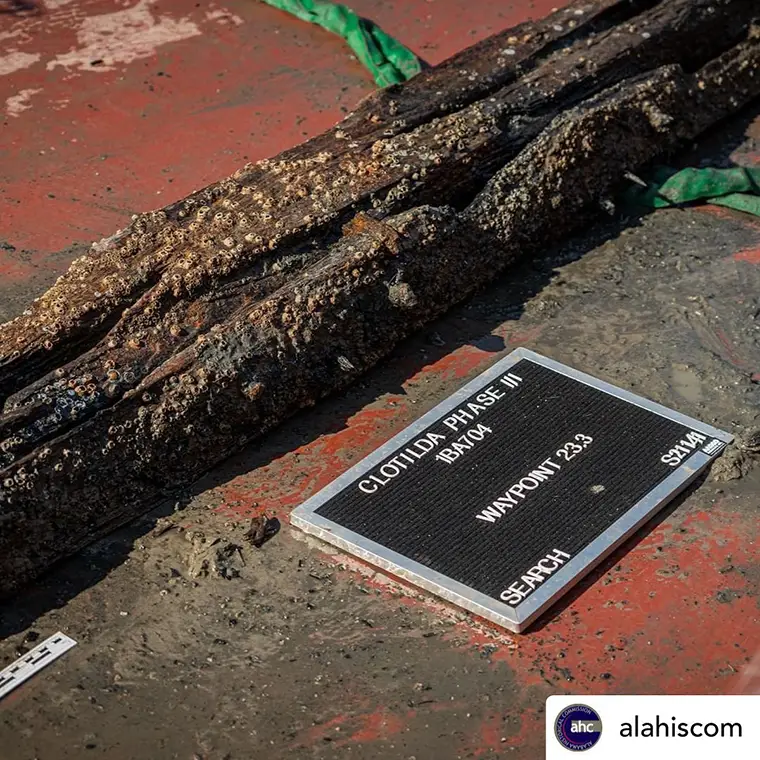
That’s why DWP collaborated with Search, Inc., the Alabama Historical Commission, and the National Museum of African American History and Culture Slave Wrecks Project. Using side-scan sonar, a magnetometer, and a sub-bottom profiler, archaeological surveys confirmed in May 2019 that the ship was in the Mobile River.
It took another three years for a comprehensive site survey to verify the discovery in 2022. Jim Delgado, a maritime archaeologist from Search Inc., led the investigation and excavation of the Clotilda with assistance from Stewart’s team of five dive instructors. In all, the team removed, documented, and cataloged 94 artifacts before returning 90 of them to the wreck.
A comprehensive report by the Alabama Historical Commission detailed the 2022 field mission of the Clotilda and made recommendations for its future care, conservation, and protection.
DWP divers have participated in 20+ missions around the world to find submerged artifacts relevant to Africans in the Americas.
DWP divers have participated in 20+ missions around the world to find submerged artifacts relevant to Africans in the Americas.
DWP works in partnership with the Slave Wrecks Project (SWP), a collaboration of organizations hosted by the Smithsonian’s National Museum of African American History and Culture. These groups include George Washington University, the National Park Service (Submerged Resources Center and Southeast Archaeological Center), the African Centre for Heritage Studies, and the IZIKO Museums of South Africa.
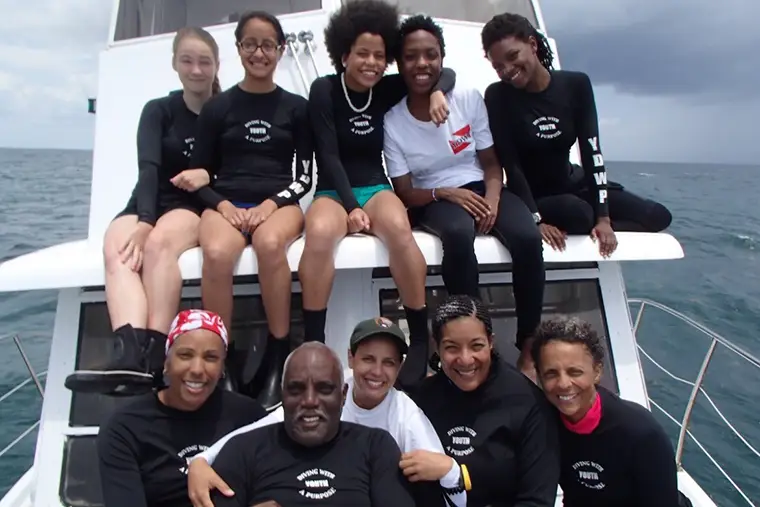
DWP Programs: Youth Diving With a Purpose
DWP participants gather annually at Biscayne National Park, Florida, to learn underwater archaeology with DWP instructors. This program—that meets in a park that protects coral reefs, mangrove forests, Biscayne Bay, the Florida Keys, and 10,000 years of human history—mirrors DWP’s adult programs.
However, DWP’s Youth mission (YDWP) goes beyond underwater archaeological education. After all, DWP always looks for ways to challenge interests and broaden knowledge related to our vast aquatic environment, so it looks for ways to empower youth.
These young divers from ages 16 to 20 spend their downtime interviewing, journaling, and studying as part of their commitment to share their YDWP journey with other young people in their communities, as well as in schools and community groups once they graduate and return home. This outreach has the potential to reach diverse youth nationwide, stimulating interest in scuba diving, marine science, history, journalism, and technology.
The YDWP program is also committed to empowering minority coastal communities by providing them with these types of opportunities. Many of these youths do not know how to swim and have taken little advantage of the water-related “wonders” in their backyard.
Each participant, invaluable in advancing the goals of the overall program, is encouraged to speak to media outlets in their schools and beyond, as well as to related clubs and activities as deemed appropriate.
Those participants who demonstrate initiative and commitment to the marine science community are considered for training as DWP Instructors. Ultimately, DWP hopes to inspire local youth to become environmentally conscious and take advantage of the many opportunities at their disposal.
Upon completion of the program, youth trainees become certified Underwater Archaeology Advocates, intrigued by history, respectful of marine life, and buoyed with the interest to become new storytellers of their great experience with the sea.
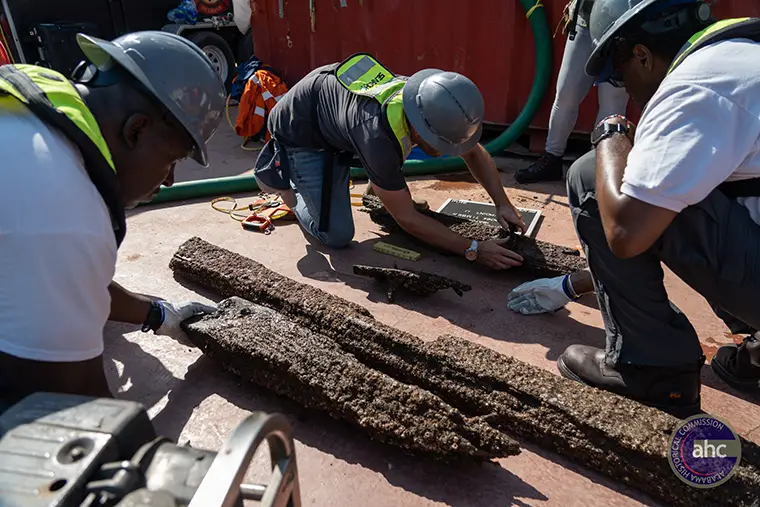
CARES: A Collective Approach to Restoring Our Ecosystem
CARES, developed by DWP Lead Instructor Kramer Wimberley, is DWP’s coral ecosystem monitoring and ocean restoration program that documents the current health of coral reefs and performs restorative work to bring them back into balance. To this day, DWP continues to revise and hone its CARES model to make it more attractive and engaging for participants (as well as useful for the scientific community).
In 2024, CARES received recognition and acknowledgment from several public and private organizations. The program continues to break ground and expand on its two founding principles: the preservation and restoration of our coral ecosystem.
A December 2023 newsletter stated, “The week after the archaeology class, the adult CARES was held in Islamorada, Florida. Later in the summer, 20 miles north of Key Largo, YDWP conducted a search for the slave ship Guerrero with the National Park Service, with 20 youth and adults involved in this historic search!
The following week, YDWP had its 11th archaeology training mission in Biscayne National Park. The group was documenting a wreck called Erl The King. Then, the DWP CARES program convened in Islamorada, FL in July, where we encountered climate change head-on. Because of warming water, the temperature of the ocean was 91 degrees, causing significant coral bleaching.
“We finished the year in Guanaja, Honduras, in partnership with CARES and our newest program, Youth International Cultural Awareness Program (YICAP),” reported Stewart. “Our youth from the US partnered with youth from Guanaja, Honduras. It was an extraordinary week of interacting with one another. The group encountered the same warming conditions seen in the US, resulting in a universal call from the youth to confront climate change.”
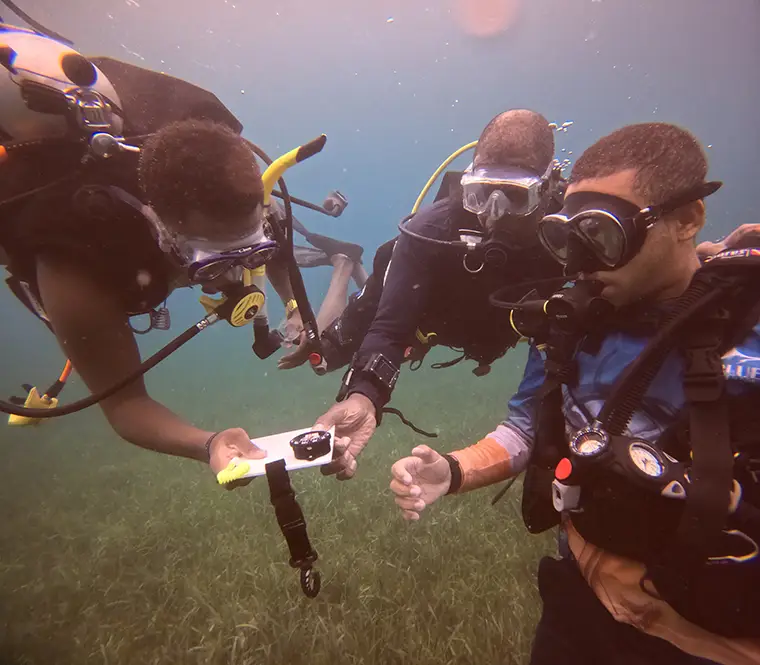
DWP’s Partnership With National Geographic
Tara Roberts is a National Geographic Explorer in Residence and Storyteller who was instrumental in working with DWP. She saw a photo of Ken in the National Museum of African American History and Culture in Washington, DC and contacted him.
An article in NatGEO explained that “Her goal and focus of her articles was to visit African countries to retrace their journeys through 20 countries in the Caribbean. She has been reimagining and reframing the origin story of Africans in the Americas and telling their stories to humanize and bring empathy, nuance, and complexity to their human journey.”
DWP Also Trains Paraplegic Divers
During the June 2023 DWP archaeology training session in Key Largo, Florida, DWP had the opportunity to train its first paraplegic scuba diver— Chris Powell from Dallas, Texas. Chris was confined to a wheelchair because of an auto accident.
He said, “I took up diving nine years later, and it’s been one of the focal points of my mental, physical, and social rehabilitation. As a diver with physical challenges, I’ve developed adaptive skills, techniques, and equipment to facilitate the processes.”
“DWP’s commitment to conservation, underwater archaeology, and its partnership with NOAA has always piqued my interest, so the decision to attend a session was a dream fulfilled. We worked alongside NOAA to survey and map a ship believed to have sunk in the 1890s. I learned how to gather data, survey, draw, and convert our findings to scale for further review and study. Lastly, I want to recognize the DWP and NOAA staff for accommodating my process and allowing me to become a member of the DWP family.”
Dedicated a Tuskegee Airmen Statue For Downed Planes
Michigan had served as an advanced training ground for many graduates of the famous all-African-American Tuskegee pilot training program. Five aircraft of these pilots went down in the Great Lakes during training exercises.
On August 28, 2021, DWP proudly dedicated a memorial to the Tuskegee Airmen of WWII to memorialize the five pilots who perished in accidents in the Port Huron, Michigan area.
A Recent Shipwreck Discovery in the Florida Keys
DWP’s third quarter newsletter stated that “The adults completed their 18th mission in Key Largo, Florida, in collaboration with NOAA researchers.” During this mission, they documented a previously unknown wreck at French Reef, thanks to the help of 18 DWP instructors and advocates.
The four-masted ship, Star of the Sea, built in Bath, Maine, in 1886, was carrying lumber from Pensacola, Florida, when it grounded in 1911. However, according to historical records, this was just one of nearly a dozen ships that were wrecked in this area in the 19th and 20th centuries.
Several artifacts, including the remains of rigging and a steam boiler, were found amid the wreck site, which was scattered across 76 m/250 ft in 6 m/20 ft of water. This discovery contributes significantly to our understanding of maritime history in the region.
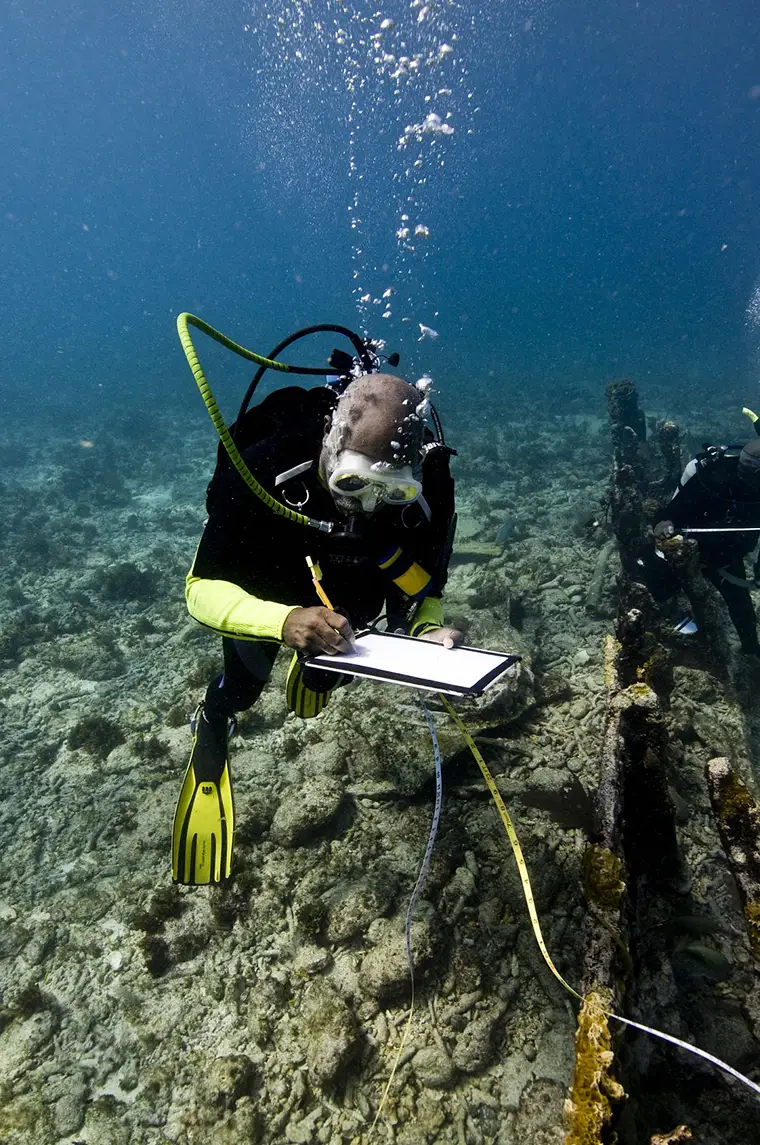
What The Future Holds for DWP
Like any engaged leader, Ken Stewart is currently overseeing a handful of programs for DWP and, as co-founder and Program Director of the Tennessee Aquatic Project, (TAP) which “aims to broaden the horizons of middle Tennessee youth from under-resourced communities,” he has a lot on his plate. TAP offers life skills and unique opportunities through aquatic activities, outdoor exploration, and leadership experiences.
Winding down his career and approaching retirement, Stewart has a succession plan in place to hand over his post in the coming years. “Though it’s all volunteers,” he commented, “I’m trying to train some folks to do what I do. The most important role is ongoing fundraising.”
“While I was never a history buff,” offered Stewart, “I always loved the ocean. DWP has helped me marry that love with my quest to document the submerged history of slave ships for other African Americans.”
Restoring Our Oceans. Preserving Our Heritage.
If you’d like to donate to Diving With a Purpose, you can do so HERE. This non-profit with a motto of “Restoring Our Oceans and Preserving Our Heritage” welcomes your gift to help train the next generation of marginalized people from around the world as citizen scientists who support our coral reef ecosystems and as underwater archaeology advocates.
Finally, if you find that DWP’s mission and projects interest you, consider joining them. You don’t have to be a researcher, scientist, or archaeologist. All you need are both an Open Water scuba certification and 30 logged dives.
DIVE DEEPER
MasterMinePodcast: Lost Slave Ships Found! Kenneth Stewart Founder of Diving with a Purpose on Wrecked Slave Ships
InDEPTH: We Sea You! by Georgina Brown

Gil Zeimer has been a PADI-certified diver for 40 years and a scuba storyteller for over three decades. His experience includes more than 225 scuba articles published in newspapers, magazines, newsletters, and websites. These include ScubaShow.com, Scuba Diving Industry Magazine, California Diving News, Scuba Times, DAN Alert Diver, Sport Diver Interactive, Dive Travel, Dive Pacific, Asian Diver, Adventure Journal, Scuba Diver Life, Scuba Radio, Red Sail Sports, Sun Divers Roatan, Undercurrent, The Travelin’ Diver’s Chapbook, Marin Scuba Club, Northern California Underwater Photographic Society, Local Getaways, the S.F. Chronicle, the Los Angeles Times, and the Marin Independent Journal. A third-generation San Franciscan, Gil lives in San Rafael, CA, and prefers warm water diving.

